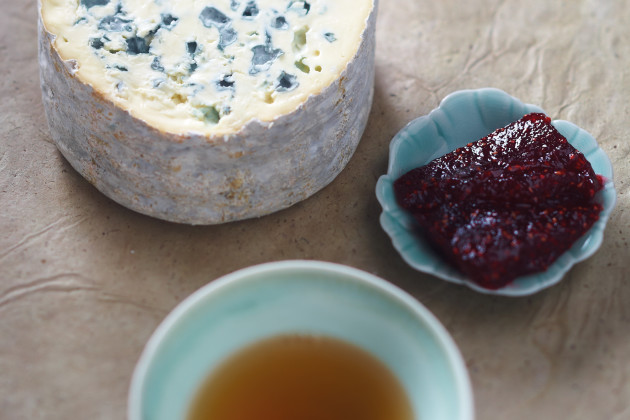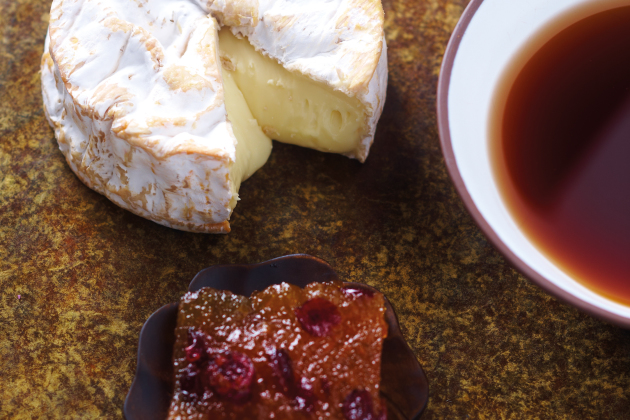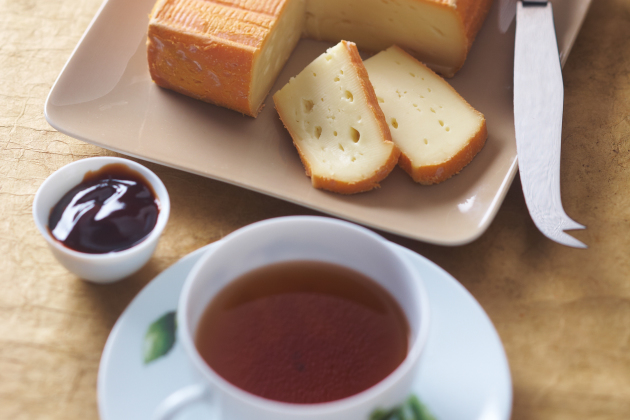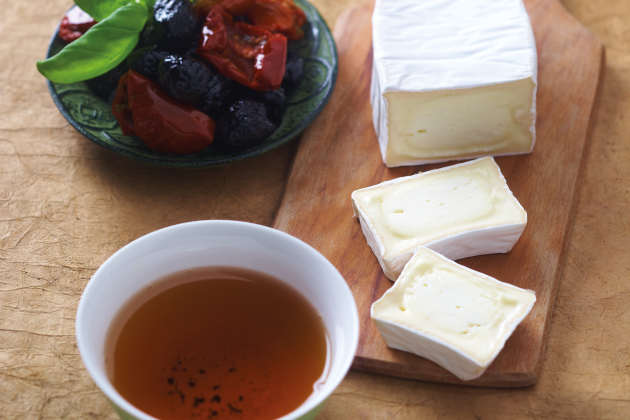Cheeses & Tea
Colours of tea
Tea (or Camellia Sinensis in Latin) comes in six colours: white, green, yellow, blue-green, red and black. In fact, Chinese red tea was called black by the British when they were developing eastern trade links with Europe in the 17th century. Chinese black tea is called “dark tea” in its home country, and belongs to the famous Pu’er family. We will use the original Chinese name. Tea is all about oxidation. Oxidation is a natural plant ageing process such as we might admire in autumn. When they are deprived of water and in contact with air, leaves dry out. Due to oxidase enzymes in their structure, they slowly change colour from green to brown. Their flavour also changes.
The colours of tea relate to the level of oxidation which the grower has encouraged in the leaves post-harvest in their workshop (which is not unlike a wine cellar).
White tea is only slightly oxidised, green tea has not been oxidised at all, red tea is fully oxidised and blue-green is partially oxidised. Yellow tea is a rare, expensive Chinese speciality produced in just two regions. It is a distant cousin of green tea, only its leaves are slightly fermented. It is difficult to find good quality yellow tea in France, and it has not been selected for pairing. As for black tea, or Pu’er, it is not merely enzymatically oxidised, it is fermented at microbial level too – yeast and bacteria help to form the tea’s taste. It is pressed into patties then refined in cellars for several months (or even years), just like cheese.
Cheese texture and subtle pairings of tea and cheese
There is an infinite range of potential tea and cheese combinations – there might even be more than wine and cheese, thanks to tea’s refreshing qualities.
The texture of each cheese is a determining factor in pairing a tea, as it reveals the latter’s structure or smooth qualities. It is also possible to play with tea serving temperatures, from cold through to warm and hot. This way, you can create contrasts with your cheese or use similar temperatures to influence the way the cheese’s texture develops in the mouth and reveal its flavours. Of course, their respective aromatic notes work together through contrasts or harmonies.
With some pairings, a sweeter note can be added midway, making for a three-step cheese/sweet/tea tasting session.
 繁體中文
繁體中文  简体中文
简体中文  한국어
한국어  Français
Français 







